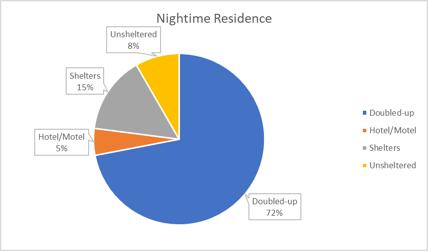
2 minute read
Office of Equity
from 2023.02 The Voice
by FWPSComm
Positive Behavioral Interventions & Supports (PBIS)
Featured Classroom Practice: Engagement and Multiple Opportunities to Respond
Advertisement
What Is It?
• Maximize the simultaneous involvement of all students through strategies and questions to solicit group responses.
• Design lesson plans and instructional strategies so that multiple students are involved in thinking and problem-solving, rather than one-at-a-time.
CEL5D + Focus Indicator Connection
-->
SE1: Quality of Questioning and SE5: Student Talk
Benefits
Increasing academic opportunities to respond has many benefits to scholars and the overall learning environment in the classroom. High rates of opportunities to respond during instruction increase the accuracy of scholar responses. In addition, more response opportunities result in improved learning, thereby increasing the amount of material that can be covered.
When teachers increase their rates of opportunities to respond, scholars on-task behavior increases and disruptive behavior decreases
Engagement and multiple opportunities to respond is trauma-informed:
• Allowing for differentiated response supports all scholars to engage in ways they are most comfortable.
• Facilitating multiple opportunities for scholars to respond provides time to process or apply what they are learning, which allows neural networks to be strengthened (Craig, S.E., 2016; via Midwest PBIS Network).
Examples: individual or small group questioning (e.g., use of equity sticks, turn and talk, think/pair/share), choral response, use of wait/think time of 5 seconds, white board response, response cards, signaling or movement activities, use of tech/apps, guided notes, etc.
Resource from Midwest PBIS Network: Snapshot Handout - 1 pager includes a self- and peer observational tool to check on opportunities to respond.
Native Education
Have you seen this symbol in Synergy?
This indicates that a scholar is a member of our Title VI Native Education Program. Would you like to learn more? Feel free to email Amanda Rambayon, our Native Education Coordinator (arambayo@fwps.org).
Attendance & Reengagement
It is our pleasure to introduce our FWPS Attendance Liaison: Kamilah Keyes-Brown! She will be working with school Attendance Teams and Community Engagement Boards.
Here are a few ideas to support regular attendance:
• Talk with family members and scholars about what they like about school & what could be improved
• Connect families with others in the school to get necessary supports
• Encourage families to have morning and evening routines
• Ask parents/guardians to check scholar attendance records for accuracy
McKinney Vento
The McKinney Vento Act defines children and youth homelessness as lacking a fixed, regular, and adequate nighttime residence. Each the number of students who are identified as experiencing homelessness increases. So far this year, we have identified more than 1,100 scholars experiencing homelessness. The types of homelessness that scholars can experience are doubled, in a shelter, in a motel/hotel, or unsheltered. About 75% of students experiencing homelessness are double-up. This means that the situation may be hard to identify as a situation of homelessness.
If you or someone you know may be experiencing homelessness, please reach out to your school counselor to get clarity about the situation to see if it is eligible for McKinney Vento Services. It is good for families to be connected to the school counselors even if they aren’t experiencing homelessness but are at risk of homelessness. It is also good to connect with resources in the community that can support families who are experiencing homelessness or at risk of experiencing homelessness.






